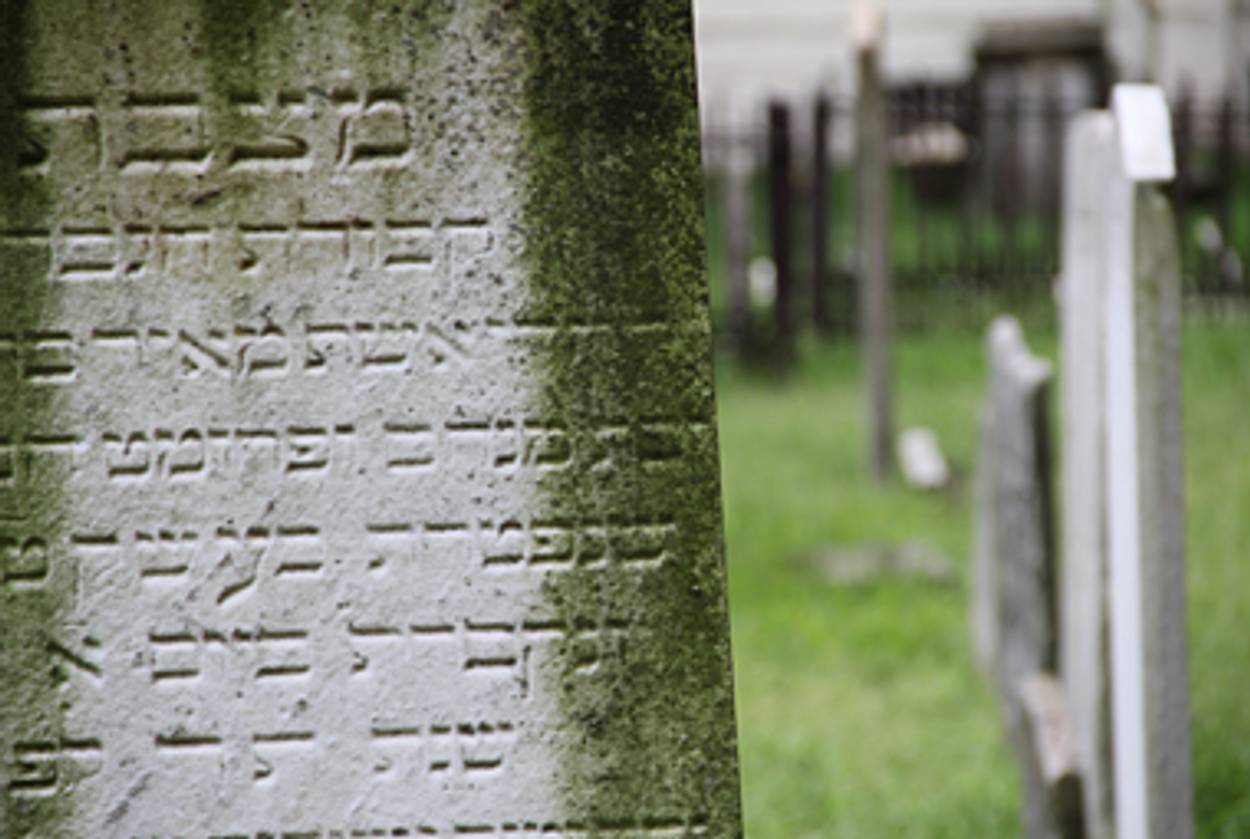Buried
Three cemeteries belonging to Shearith Israel, the oldest Jewish congregation in North America, are tucked away in Manhattan, a visible legacy of New York City’s long-ago Jewish past




There’s a small Jewish cemetery tucked away on an unlikely block in Manhattan, behind some condominiums on West 21st Street. It’s just a few minutes from Tablet Magazine’s new office on Tin Pan Alley, and I recently stumbled upon it. As it turns out, it has two siblings further downtown, and, taken together, the trio offer a window into the history of both the city and its Jewish community.
The three historic Manhattan cemeteries belong to Congregation Shearith Israel, a Spanish and Portuguese synagogue in Manhattan and the oldest Jewish congregation in North America, established in 1654. They are perhaps the most durable legacy of New York City’s long-ago Jewish past. The Shearith Israel congregation was founded by 23 Jewish refugees, descendents of Spanish Jews, exiled during the Inquisition, who fled from Recife, Brazil, after it was taken from the Dutch by the Portuguese. They were fleeing anti-Semitism but were greeted coldly by Peter Stuyvesant, the Dutch director-general of the colony of New Netherland. From 1654 until 1825, Shearith Israel was the only Jewish congregation in New York City. In its long history, membership of the congregation has included Supreme Court Justice Benjamin Cardozo, three founders of the New York Stock Exchange, and the poet Emma Lazarus, whose famous words from “The New Colossus” are affixed to the Statue of Liberty. Shearith Israel—the name translated is “Remnant of Israel”—owns a Torah that dates to the American Revolution.
The First Cemetery of Shearith Israel is in southern Manhattan, above the first neighborhoods of New York City; it is the oldest Jewish cemetery in North America. The lot sits near Chatham Square in Chinatown and is lined with the graves of, among others, 22 veterans of the American Revolution and the first American-born rabbi. It was once a place where residents of nearby tenements would hang up their wash, and its trees provided cover for George Washington to hide a battery of guns from the British during the American Revolution. The cemetery, which operated from 1683 until 1828, is now listed on the National Register of Historic Places.
If you walk north, in the direction the city grew, the Second Cemetery is easier to miss. It sits on a small tract on West 11th Street, just east of 6th Avenue, amid perfectly maintained Greenwich Village townhouses. Established in 1805, the cemetery was cut significantly in size when the expanding city built 11th Street on the city grid as a part of the Commissioners’ Plan of 1811.
Twenty headstones from the original Second Cemetery are still standing on 11th Street, beside an old red brick building that was once a Civil War tavern known as The Grapevine, where Union officers would carouse and Southern spies eavesdrop—the origin of the phrase “I heard it through the grapevine,” made famous a century later thanks, variously, to Gladys Knight, Marvin Gaye, and a cartoon box of singing raisins.
Of Shearith Israel’s three historic cemeteries, it’s the third that is the most visibly disjointed from its urban enclosure. Unlike the Second Cemetery, an elfin triangle tucked away on a small tree-lined street in Greenwich Village, or the First, which blends in with the nondescript stacks and ramshackle structures of Chinatown, the Third sits on an anonymous block of 21st Street, just west of 6th Avenue. The lot for the Third Cemetery was purchased in 1829 for the then-princely sum of $2,750. Like for the others, at the time of its purchase, the area surrounding the Third Cemetery was still considered to be the outskirts of New York City.
Buildings on three sides make the tract appear diminutive and boxy, like a missing tooth. Large black gates block public entrance from the street. The cemetery operated until 1851, after which a law was enacted forbidding burial anywhere south of Manhattan’s 86th Street. The Third Cemetery has about 250 graves, some of them still legible, others too effaced to read.
To the east of the graveyard once stood the third iteration of the Shearith Israel Synagogue. When the synagogue moved to its present location on an erstwhile duck farm on Central Park West, the old building became Hugh O’Neill’s Dry Goods Store. The O’Neill Building later came under the ownership of the El-Ad Group, an Israeli company whose American real-estate arm converted the building into condominiums, as it did with the Plaza Hotel after purchasing the landmark in 2004. To the west of the cemetery stands another condominium. Nearby, on Seventh Avenue, is the storefront of New York’s newest Trader Joe’s, which is fittingly, among other things, a dry-goods store.
Adam Chandler was previously a staff writer at Tablet. His work has appeared in the New York Times, the Wall Street Journal, the Atlantic, Slate, Esquire, New York, and elsewhere. He tweets @allmychandler.
Adam Chandler was previously a staff writer at Tablet. His work has appeared in the New York Times, the Wall Street Journal, the Atlantic, Slate, Esquire, New York, and elsewhere. He tweets @allmychandler.